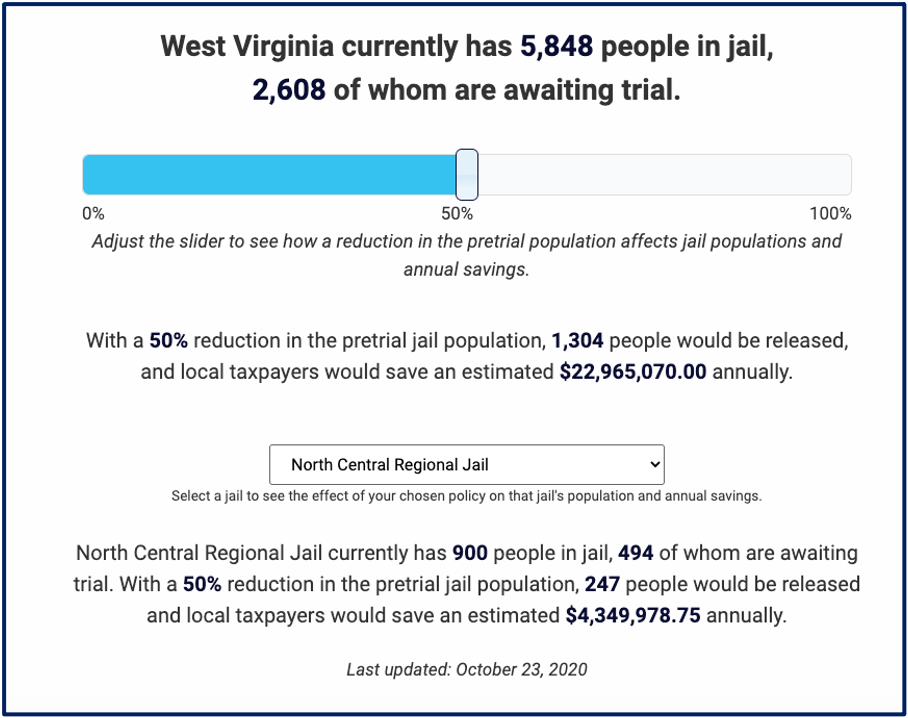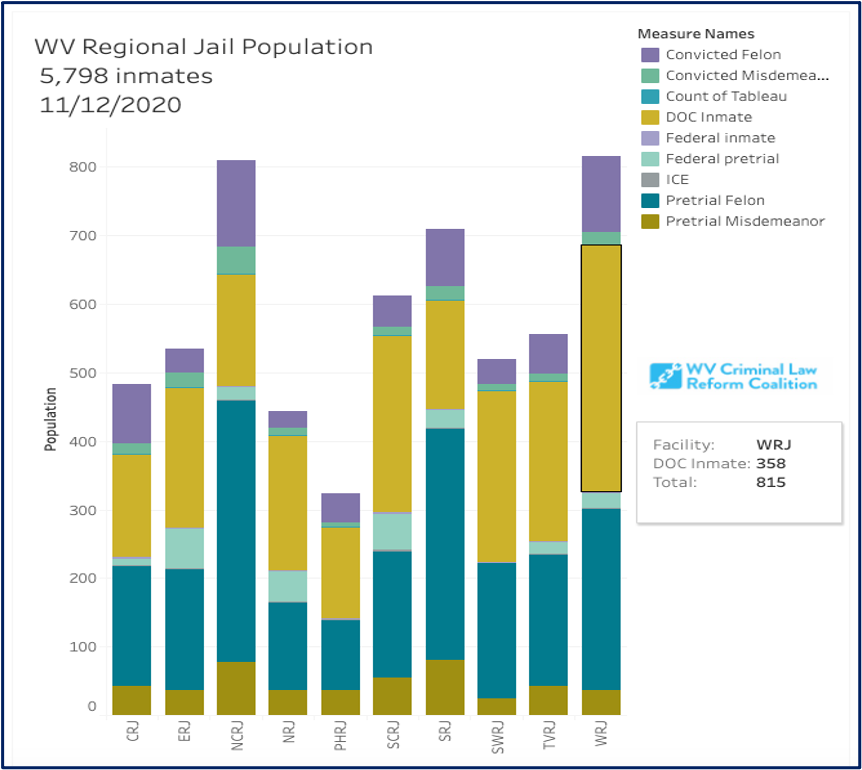When the COVID-19 pandemic began, West Virginia law enforcement and corrections officials moved quickly to reduce jail and prison populations. And while the prison population has remained lower than normal, since April, the jail population has steadily increased and was more than 35 percent overcapacity as of November 12.
Among the reasons for the burgeoning jail population is a persistently high number of defendants being held pretrial. Detaining such a large number of people pretrial puts people in regional jails at a higher and unnecessary risk of contracting COVID-19, increases the likelihood that already vulnerable people could lose their employment, and strains county budgets.
With the launch of the new West Virginia Criminal Law Reform Coalition website, people will be able see, likely for the first time, the weekly population count of West Virginia’s regional jails and what pretrial detention is costing our counties.
The number of people held pretrial in regional jails remains high despite the passage of modest, bipartisan bail reform legislation, House Bill 2419, that went into effect in June. Recognizing that people who are held pretrial are often there simply because they can’t afford to pay their cash bail, the purpose of the reform was to presume non-monetary release for people charged with non-violent crimes. However, there are slightly more people being held pretrial now than just before the reform went into effect, so it’s clear that the law isn’t working as it was intended.
The cost of keeping someone in a regional jail is statutorily set at $48.25 per day, and counties are responsible for paying for that cost if one of their residents is held pretrial or sentenced to jail time as a result of a misdemeanor conviction. This can be costly — indeed, some counties have struggled to pay their jail bills in recent years — and it impedes investments in social and health services. The new policy simulator on the WV Criminal Law Coalition website allows visitors to toggle the slider and see just how much taxpayer money could be saved if regional jails decreased their pretrial population.
The image of the simulator below reflects the total pretrial jail population for all counties and specifically spotlights North Central Regional Jail (NCRJ). It indicates that NCRJ held 900 people on October 23, 2020, 494 of whom were pretrial. At the per diem rate of $48.25, this day alone of housing just the people held pretrial cost the counties in NRCJ’s jurisdiction an estimated $23,835. The slider shows the number of people that would be released — and the money saved over a year — if jails reduced their pretrial population by a certain amount. This will be updated regularly as the coalition receives new jail and prison population reports.

In addition to the policy slider, the coalition website will soon allow viewers to see the population breakdown of each regional jail by category. For example, on November 12, 2020, 358 inmates at Western Regional Jail were under Department of Corrections supervision, meaning that they should have been moved to a prison rather than waiting in jail. Continuing to house them in jails contributes to jail overcrowding, which is always inappropriate but is especially dangerous amid a pandemic that has been known to devastate congregate settings that don’t allow for proper social distancing.
This regularly updated chart will be a step toward transparency and giving West Virginians a deeper understanding of changes in our regional jail population.

Adding a layer of transparency to the jail numbers and costs is a necessary part of decarcerating our jails and prisons. It allows residents to see more clearly where their money is going and just how many people we are unnecessarily keeping behind bars despite a new bail reform bill that provides a path to reducing pretrial incarceration. This was important before the COVID-19 pandemic began and will remain critical to criminal legal reform when the virus is finally under control. Going forward, magistrates, law enforcement, and county officials must identify and implement ways to reduce jail populations.